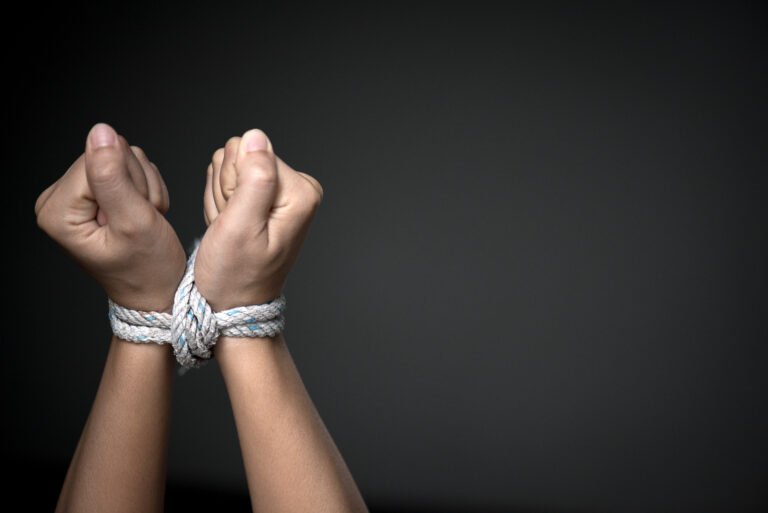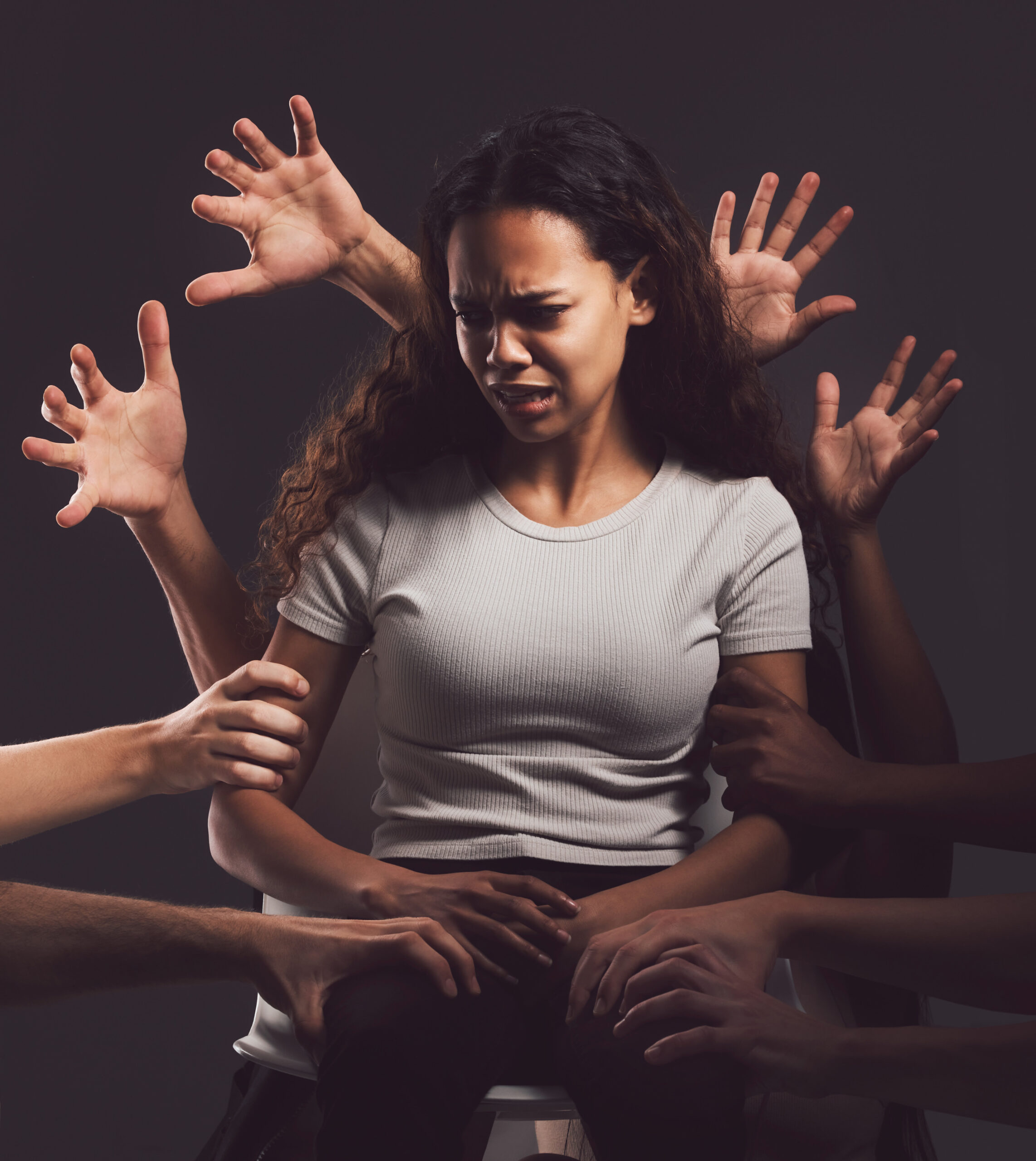Every day, innocent children around the world are bought and sold like mere commodities in a dark and sinister underworld known as child trafficking. This heinous crime preys on the most vulnerable members of society, robbing them of their childhoods and leaving lasting scars that may never fully heal. Join us as we delve into this disturbing reality and shed light on the cruel realities faced by these young victims. It’s time to raise awareness, take action, and stand up against the exploitation of our most precious resource—our children.
- Introduction to Child Trafficking and Exploitation
Child trafficking is a sinister reality that lurks in the shadows, preying on innocence and vulnerability. In this dark world, young lives are bought and sold like mere commodities, subjected to unspeakable horrors beyond imagination. It’s a crime that thrives in secrecy, but it’s time to shine a light on this harrowing issue. Join us as we delve into the chilling depths of child trafficking and exploitation, unraveling the harsh truths that demand our attention and action.
- Definition of Child Trafficking and Its Prevalence Worldwide
Child trafficking is a heinous crime that involves the exploitation and abuse of innocent children for various purposes. It refers to the recruitment, transportation, transfer, harboring, or receipt of children for the purpose of exploitation, including forced labor, sexual exploitation, child marriage, organ harvesting, and more.
Unfortunately, child trafficking is not limited to one region or country; it is a global issue that affects millions of children worldwide. According to UNICEF estimates from 2017-2018, around 1 in every 4 victims of human trafficking are children. These vulnerable individuals are often lured with false promises or kidnapped against their will.
The prevalence of child trafficking highlights the urgent need for awareness and action to protect these young lives from falling into the hands of perpetrators who seek to profit from their suffering. By understanding the definition and scope of this crime on a global scale, we can work towards creating a safer world for all children.
- Understanding the Root Causes and Risk Factors for Child Trafficking
Child trafficking is a dark and sinister crime that preys on the most vulnerable members of society – children. To effectively combat this issue, it is crucial to understand the root causes and risk factors that contribute to the perpetuation of child exploitation. Poverty, lack of education, war and conflict, as well as social inequalities all play significant roles in creating an environment where children are at risk of being trafficked.
Additionally, the demand for cheap labor, sexual exploitation, and organ trafficking fuels the heinous cycle of child trafficking. Perpetrators often target marginalized communities where families are desperate for financial stability or basic necessities. Lack of awareness and weak law enforcement also make it easier for traffickers to operate with impunity.
By addressing these underlying issues and implementing strong preventative measures, we can work towards safeguarding our children from falling victim to this atrocious crime.
- Who Are the Perpetrators and How Do They Operate?
Child trafficking perpetrators come in various forms, from individuals to organized criminal networks. These predators often target vulnerable children living in poverty or lacking a support system. They use manipulation tactics to gain the trust of their victims before exploiting them for labor, sex trafficking, or organ harvesting.
Perpetrators operate covertly, using deception and coercion to control their victims. They may lure children with false promises of a better life or threaten them into compliance through violence and intimidation. Through sophisticated networks and technology, traffickers transport victims across borders undetected.
These criminals thrive in the shadows, preying on the innocence of children for financial gain. The anonymity provided by online platforms has made it easier for perpetrators to connect with potential victims and evade law enforcement efforts. It is crucial to remain vigilant and educate communities on how these perpetrators operate to effectively combat child trafficking.
- The Impact of Child Trafficking on Victims and Their Families
The impact of child trafficking on victims and their families is profound and devastating. For the children themselves, the trauma experienced can have long-lasting effects on their mental, emotional, and physical well-being. They are robbed of their innocence and forced into a world of exploitation and abuse.
Victims often suffer from post-traumatic stress disorder, anxiety, depression, and other mental health challenges as a result of their traumatic experiences. Their sense of trust in others is shattered, making it difficult for them to form healthy relationships in the future.
Families left behind also face immense pain and anguish, knowing that their loved ones have been taken advantage of and subjected to unspeakable horrors. The emotional toll can be overwhelming as they grapple with feelings of guilt, helplessness, and grief.
Rebuilding trust within families after such trauma can be a long process requiring support from professionals who understand the complexities of child trafficking’s aftermath. It is crucial for communities to come together to provide these families with the resources they need to heal from this unimaginable tragedy.
- Organizations and Efforts to Combat Child Trafficking
In the fight against child trafficking, numerous organizations and efforts are dedicated to combating this heinous crime. These include NGOs like UNICEF, International Justice Mission, and ECPAT, which work tirelessly to rescue victims and bring perpetrators to justice.
These organizations provide support services for survivors, raise awareness through advocacy campaigns, and collaborate with governments to strengthen laws protecting children from exploitation. Their work extends beyond borders as they strive to dismantle trafficking networks globally.
Through training programs for law enforcement officials and community outreach initiatives, these organizations empower individuals to recognize the signs of trafficking and report suspicious activities. By uniting forces with local communities and government agencies, they create a united front against those who seek to profit from innocent lives.
Together, these organizations play a vital role in safeguarding vulnerable children from falling prey to traffickers’ schemes. Their dedication serves as a beacon of hope in the darkness of child exploitation – illuminating pathways towards a safer future for all children worldwide.
- Ways to Identify and Help Potential Victims of Child Trafficking
As a community, it’s crucial to stay vigilant and informed about the signs of child trafficking. Be observant of any unusual behavior in children you encounter, such as fearfulness or avoiding eye contact. Keep an eye out for physical indicators like untreated injuries or malnourishment.
Educate yourself on the red flags that may indicate a child is being exploited—sudden changes in behavior, unexplained absences from school, or being controlled by others. Trust your instincts if something doesn’t seem right and report any suspicions to authorities immediately.
Be supportive and non-judgmental if a child discloses their experiences to you. Encourage open communication and provide resources for them to seek help safely. Remember, your intervention could be life-changing for a vulnerable child facing exploitation.
- Steps in Taking Action Against Child Trafficking
If you are wondering how you can help combat child trafficking, there are several steps you can take to make a difference. One way is to educate yourself and others about the issue. By spreading awareness, you can help shine a light on this dark world and encourage others to take action.
Supporting organizations that work towards preventing child trafficking is another impactful step. Donating your time or resources can provide crucial support for victims and aid in the prevention of future exploitation. Additionally, advocating for stronger laws and policies to protect vulnerable children is key in the fight against trafficking.
Engaging with your local community through events, fundraisers, or initiatives focused on raising awareness about child trafficking can also be effective. By coming together as a collective force, we can strengthen our efforts to combat this heinous crime and protect innocent lives from being bought and sold like commodities.
Remember, every small action contributes to a larger impact in the fight against child trafficking. Together, we can stand up against exploitation and make a difference in the lives of those who need it most.
- Conclusion: The Importance of Raising Awareness and Taking a Stand Against This Crime
Child trafficking is a dark and heinous crime that preys on the most vulnerable members of society. It thrives in secrecy and shadows, but by shedding light on this issue and raising awareness, we can begin to dismantle the networks that perpetuate it.
It is crucial for individuals, communities, governments, and organizations to come together to take a stand against child trafficking. By working collaboratively to identify potential victims, provide support services, advocate for policy changes, and hold perpetrators accountable, we can make a difference in combating this form of exploitation.
Each one of us has a role to play in protecting children from being bought and sold like commodities. Let us all commit to educating ourselves about the signs of child trafficking, speaking out against injustices, supporting survivors as they rebuild their lives, and advocating for systemic changes that prioritize the well-being of children above all else.
Together, we can create a world where every child is safe from exploitation and abuse – but it starts with each one of us taking action today.
Resources:
https://www.nctsn.org/what-child-trauma/traumatypes/sex-trafficking/about-child-sex-trafficking
https://www.justice.gov/criminal/criminal-ceos/child-sex-trafficking
https://www.acf.hhs.gov/archive/otip/fact-sheet/fact-sheet-child-victims-human-trafficking
https://www.justice.gov/criminal/criminal-ceos/child-sex-trafficking
https://humantraffickinghotline.org/en/type-trafficking/child-trafficking




